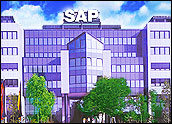
As a rule, manufacturers have been blissfully unconcerned with some of the finer points of CRM functionality and processes — but not because they have been indifferent to their customers’ needs.
Rather, the low adoption rates of CRM technology in this sector have been more reflective of manufacturers’ business operations, which traditionally have not required much input from customers beyond their initial specifications. That, however, has changed in recent years.
Now that manufacturers have recalibrated their operations to meet just-in-time demands from customers, they have embraced CRM applications that can help them accurately project the demand signal not only from their customers, but also from their customers’ customers. Part 1 of this two-part series on CRM in manufacturing examines that evolutionary change.
This second installment takes a look at one company that has extended this concept throughout the enterprise by implementing a full-scale CRM suite, in this case provided by SAP. It was not a linear progression from start to finish; indeed, the company has rejiggered at least one application’s implementation and is in varying stages of implementing other modules. The firm’s experience shows how deeply CRM can impact a manufacturer’s operations.
Second Largest
Molex is the world’s second-largest connector company and provider of electronic, electrical and fiber-optic interconnection products and systems to the global electronics industry. It also makes a variety of switches and application tooling that it markets to such companies as Alcatel, Compaq, Dell, Ford, Hewlett-Packard, Intel, Motorola, Nokia, Samsung, Siemens, Sony, Toshiba, Whirlpool and Xerox.
Managing sales — not to mention an entire CRM operation — for so wide a customer base is, to saythe least, a complex task. That is why the company decided to start with that particular piece of CRM implementation some five years ago, Bryan Blankley, the company director of CRM, tells CRM Buyer. “My background is in sales and marketing, and I was the one making the most noise about an SFA tool.”
The first step the company took was to implement SAP’s opportunity management module with mobile access to the application so as to accommodate the company’s on-the-road sales and engineering staff. “The problem was when we rolled it out — in 2001 and 2002 — a lot of the infrastructure was not there,” Blankley said. Molex redeployed this particular app a few years later, after SAP upgraded it and broadband was a more common fixture.
With that system now in place for more than a year, Molex is able to coordinate its sales activities farmore closely with its global customers’ demands, Blankley says.
Shortly after it finished its SFA integration, the company decided it was time to take a bigger step into CRM — and go live with another module. Called the “Customer Interaction Module,” it would be essential in organizing the company’s post-order activity. Unlike the sales force automation tool, however, the value proposition of this module was not as high to end users, especially since much of the data — usually in the form of e-mail — had to be inputted manually. The module is now in place at two centers, and the company plans to upgrade it to the next version in Spring 2007.
The company has rolled out other applications as well from SAP’s CRM product line, including channel management and incentive and commission management. The end result of these implementations — many of which are still in varying degrees of progress — is that the company is better positioned to use its customer data to maximum advantage.
Molex plans to leverage this data in several new areas, Blankley says — including product lifecyclemanagement, product development and budgeting — and then link it back to the production floor. “We feel this will deliver tremendous opportunities to us — and CRM is one of the core components that will feed the front end,” he says.
The Demand Signal
Molex is aiming to capture the demand signal as deeply as possible into its supply chain. An accurate view of the demand signal is the ultimate goal of any manufacturer — whether local or on the global scale of Molex — and this is often key to a company’s ability to remain competitive.
Indeed, Greg Penn, director of product development for Junction Solutions, a provider of vertical industry-focused enterprise software and services that are based on the Microsoft Dynamics AX, points out that having a consolidated view of the customer has become as integral to its success as more traditional manufacturing applications.
The more a manufacturer understands its customers’ buying habits and, more importantly, their projected demand for product, the better it can execute from a manufacturing perspective, Penn tells CRM Buyer.
Some manufacturers have a fairly straightforward view of their customers. Others, such as Molex, must rely on a number of applications to get a complete view of its widespread customer base.
Trying to unite these applications in one closed loop process, Blankley acknowledges, is a large task.However, the end goal — a global forecast of customer demand — makes it well worth it.





















































